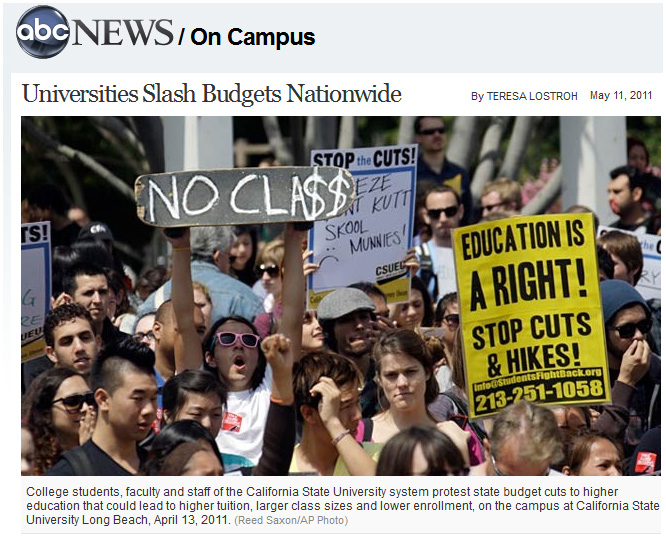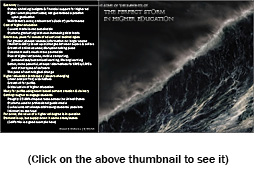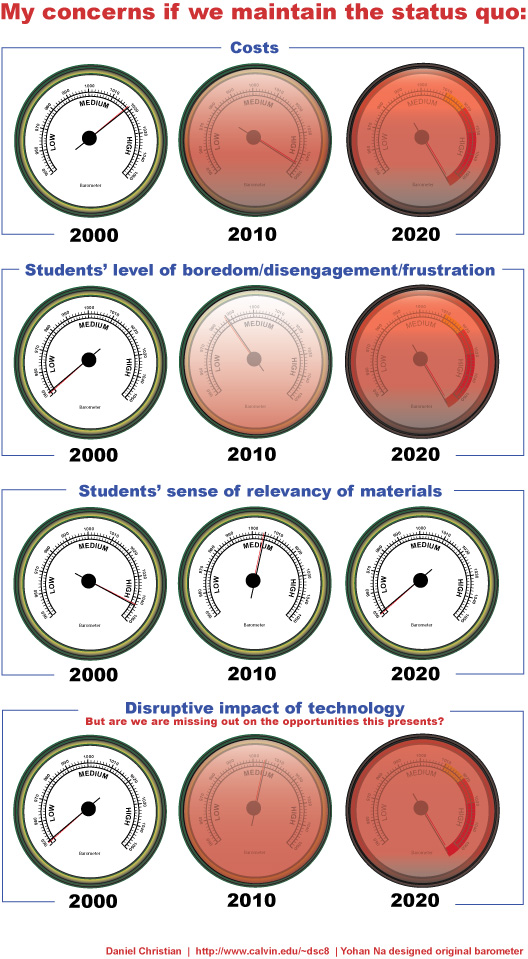From DSC:
Is there any doubt anymore that we are in a game-changing environment? This is but one of the storm fronts creating the perfect storm within higher education. The graphic I created below lays out some of the other storm fronts (and I’m sure I missed some of the other pieces, but these are some of the key drivers of change).
NOTE:
I don’t mean to be a chicken little here or a doomsdayer — rather what I’ve been saying is not speculation. It is reality. Those who choose not to deal with things as they really are — and will be — will be the ones most likely to be broadsided in the months/years to come.

Universities slash budgets nationwide — from ABC News by Teresa Lostroh
Colleges across the country are facing layoffs, program cuts, tuition hikes and possible campus closings as they brace for major reductions in state funding — again.
The leaders of Penn State University are wondering if they’ll have to close some of their branch campuses next year, and more than 400 faculty positions may be on the chopping block.
In California, class sizes are swelling while class offerings are shrinking. One community college district in San Diego has cut 90 percent of its summer courses. And in Washington, universities are increasing the enrollment of out-of-state students, who pay about three times as much as in-state students, while considering trimming resident enrollment.
Colleges and universities, which can levy revenue through tuition hikes, are a primary target for cuts when states are in a budget bind.
“This year is going to be the hardest year on record,” said Dan Hurley, director of state relations and policy analysis for the American Association of State Colleges and Universities, which has 420 member institutions. “Any new revenue at the state level is being gobbled up by Medicaid and K-12 education,” he said, and much of the federal stimulus money expires this year, setting up the perfect storm for higher education.
(9/10/10) Graphic from DSC:

Also see:


















